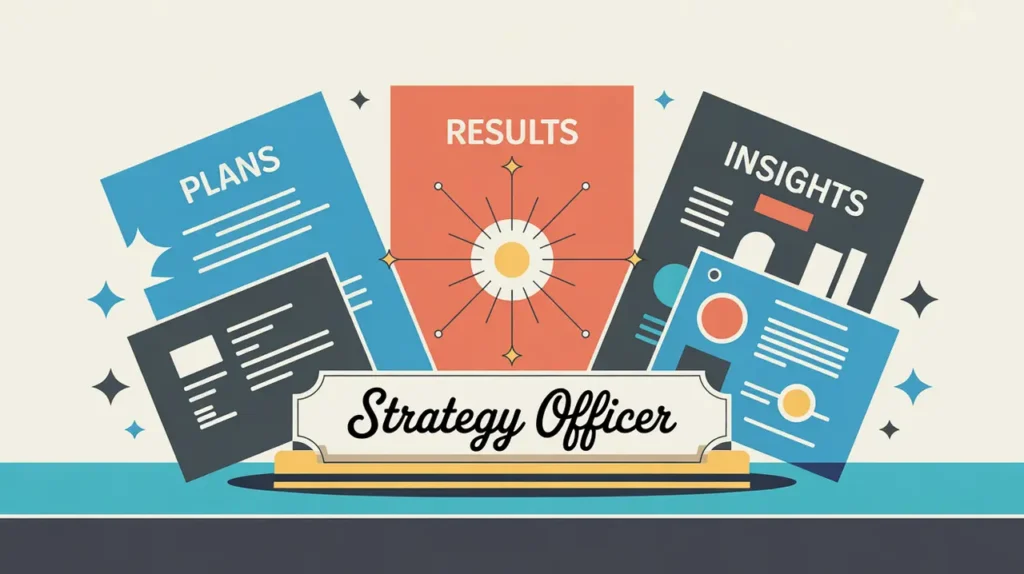What Does the Chief Executive Officer Role Involve?
A chief executive officer (CEO) is responsible for setting the overall strategic direction of an organization and ensuring its effective execution. This involves leading the development and implementation of the mission and vision, managing organizational performance, overseeing operations and resources, and serving as the primary representative to external stakeholders. The CEO works closely with the board of directors to shape strategy and governance, while leading the executive team to deliver on organizational goals. The role spans strategy, leadership, operations, finance, external relations, and organizational culture. In both nonprofits and social enterprises, the CEO plays the pivotal role of stewarding mission, driving growth and sustainability, and ensuring the organization delivers meaningful impact.
At What Level does this Role Operate?
Executive Level: This is the highest leadership role in the organization. The CEO reports directly to the board of directors and leads the executive team. They are responsible for setting organizational priorities, ensuring financial sustainability, cultivating strategic partnerships, and representing the organization publicly.
Relative Employability: CEO roles are highly competitive and typically require significant leadership experience and sector knowledge. Demand is strong across nonprofits, social enterprises, foundations, and mission-driven organizations for leaders who combine strategic vision with operational excellence and relational strength.
Relative Pay Scale: Within nonprofits and social enterprises, CEO roles sit at the highest tier of compensation. Pay levels vary by organizational size, geographic location, and funding base, but they reflect the scope, complexity, and accountability inherent in the role.
What are the Key Responsibilities and Activities?
- Define and lead the organization’s strategic vision, mission, and long-term goals
- Oversee operational, financial, and programmatic performance to ensure mission delivery
- Lead and manage the executive team, fostering alignment and accountability
- Cultivate and maintain relationships with key stakeholders including funders, partners, governments, and communities
- Serve as the organization’s primary spokesperson and representative in external forums
- Work closely with the board of directors to shape governance, strategy, and accountability structures
- Ensure organizational culture supports innovation, inclusion, and excellence
- Safeguard financial sustainability through strategic planning, fundraising, and risk management
What Core Competencies and Qualifications are Needed?
Required Qualifications and Experience
The following reflect common qualifications and experience expected for this role, while recognizing that pathways may vary by context, organization, and region.
- Relevant academic background in business, public administration, nonprofit management, or a related field, or equivalent professional experience
- Extensive leadership experience at the senior or executive level, ideally across multiple functions
- Demonstrated track record of strategic leadership, organizational management, and stakeholder engagement
- Strong understanding of governance, finance, operations, and impact delivery in nonprofit or social enterprise contexts
- Experience representing organizations externally and building high-level partnerships
Key Competencies
- Strategic vision and leadership across complex systems
- Strong governance and board relations skills
- Financial acumen and resource stewardship
- Excellent communication and public representation abilities
- Organizational management and team leadership expertise
- Capacity to navigate uncertainty, risk, and change while maintaining strategic clarity
- Deep commitment to mission, values, and impact
How are AI and Automation Shaping this Role?
An AI-native CEO will look to AI and automation to enhance strategic foresight, improve decision making, and strengthen organizational agility. They can use AI tools to model scenarios, analyze performance data, and identify trends that shape strategic direction. Automation can support operational efficiency, reporting, and stakeholder engagement, allowing the CEO to focus on leadership, strategy, and relationship building. By integrating AI thoughtfully, CEOs can build more adaptive, data-informed organizations that are positioned to thrive in complex environments.
What Career Pathways and Transferable Skills are Associated with this Role?
Chief executive officer roles are typically the culmination of leadership careers, though some individuals transition into board service, advisory positions, or executive leadership in larger organizations. The combination of strategic leadership, governance expertise, and external representation developed in this role is transferable to senior leadership positions across nonprofits, social enterprises, corporate entities, public institutions, and philanthropic organizations.







